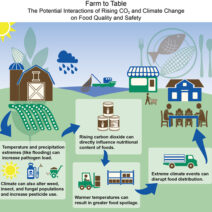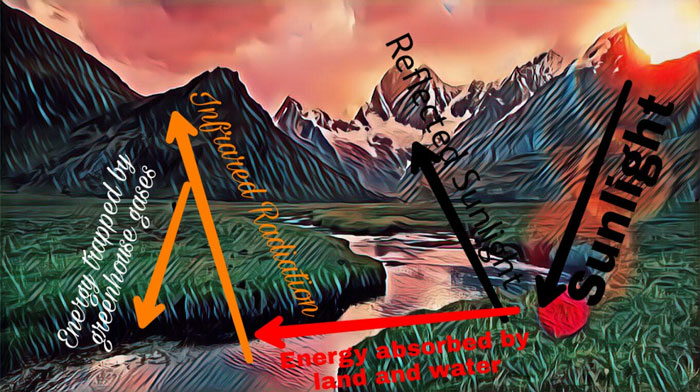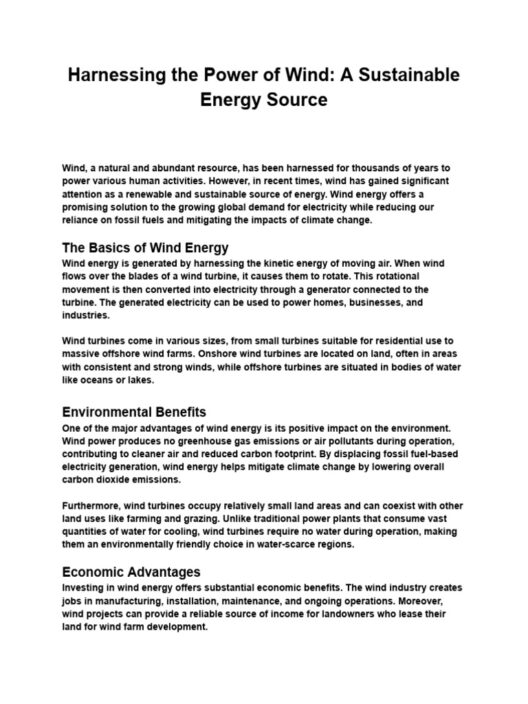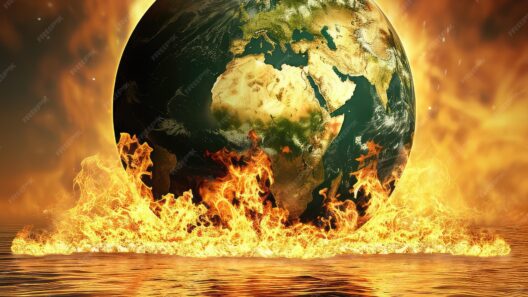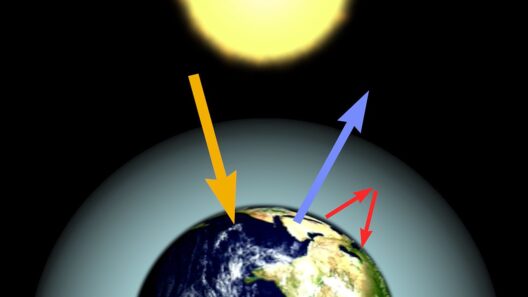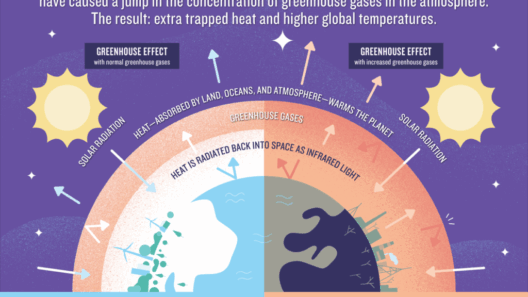The Greenhouse Effect Apex: Understanding the Dynamics of Our Warming World
The world is ensconced in a delicate balance, much like an intricate dance, where every step is symphonic yet precariously choreographed. As humanity continues to influence this performance, the consequences of our actions have begun to unfold a narrative that points towards the greenhouse effect—an apex of climatic transformation that warrants our attention. This phenomenon, while a fundamental aspect of Earth’s environmental system, has been magnified by human activities, leading to increasingly alarming climate changes. To unravel the complexities behind the greenhouse effect, it is imperative to delve into the forces driving this planetary challenge.
Understanding the Concept: What is the Greenhouse Effect?
The greenhouse effect can be likened to Earth’s atmospheric blanket, spun from a mélange of gases including carbon dioxide (CO2), methane (CH4), and nitrous oxide (N2O). This blanket radiates warmth, preventing the heat from escaping into the cold abyss of space and thereby sustaining life on our planet.
However, when we overlay our modern existence with excessive fossil fuel consumption, industrial processes, and deforestation, the balance of this dappled blanket is painfully disrupted. These activities amplify the concentrations of greenhouse gases, leading to an unexplained rise in global temperatures—an effect that reverberates throughout ecosystems and human societies.
The role of the greenhouse effect paints a picture of duality; it is both essential for life yet potentially catastrophic in its intensified state. This duality underscores the urgency for understanding the causes of the greenhouse effect so we may intervene before the dance spirals beyond control.
Human Actions: The Genesis of Greenhouse Gases
Industrialization: The Fiery Genesis
Beginning from the industrial revolution, societies worldwide have gradually come to depend on carbon-intensive energy sources. Industries belch forth carbon dioxide as a byproduct of burning coal, oil, and natural gas. Each puff from factories acts like a shot in the arm of the greenhouse effect, propelling it toward overdrive.
Modern agriculture has also contributed significantly, engaging in practices that release nitrous oxide—another potent greenhouse gas. Fertilizers, which are intended to enhance crop yields, inadvertently signal a rise in atmospheric warmth. This paradox exposes a crucial paradox within our quest for sustenance, illustrating the need for innovative agricultural practices that harmonize with ecological integrity.
Deforestation: The Silent Assassination of Carbon Sinks
As humanity carves out space for urban expansion and agriculture, forests—the lungs of our planet—are often razed to the ground. Deforestation stores up carbon dioxide by eliminating trees that would otherwise sequester this gas. The loss of these green cathedrals not only haunts biodiversity, as countless species lose their habitats, but it also accelerates global warming by releasing the stored carbon back into the atmosphere, prompting further climatic woes.
These human actions create a labyrinth of consequences that perpetuate the greenhouse effect, beckoning an urgent call for change.
Natural Processes: The Underlying Forces
Solar Radiation: The Cosmic Architect
At the cornerstone of the greenhouse effect lies the inexorable sun, the cosmic architect of life and energy on Earth. Solar radiation penetrates our atmosphere, heating the surface of the planet. This heat is subsequently re-emitted but is partially captured by greenhouse gases, ensuring that temperatures remain stable enough for life to flourish.
However, natural phenomena such as volcanic eruptions and oceanic currents also play their roles. Volcanic ash can impact atmospheric temperatures, while shifts in ocean currents, largely influenced by the delicate balance of salinity and temperature, can alter weather patterns. These natural processes can exacerbate or ameliorate the effects stemming from human activities, creating a dynamic interplay in earth’s climate system.
Feedback Mechanisms: Tipping Points Await
Earth’s systems are interconnected in a web of feedback loops, each holding potential tipping points that could spiral us further into climate distress. For example, as polar ice melts, it unveils dark ocean water, which absorbs more sunlight rather than reflecting it. This feedback escalates warming, leading to further ice loss, a cycle that can invoke drastic climatic changes.
Similarly, thawing permafrost releases vast quantities of methane—an even more potent greenhouse gas than carbon dioxide—into the atmosphere, a ticking time bomb that necessitates immediate dialogue and action. Each feedback loop serves as a stark reminder that the dynamic of the greenhouse effect is multi-faceted—intricate yet precarious, interconnected yet fragile.
Effective Solutions: Embracing Hope and Resilience
Amidst this challenging landscape, hope persists through collective action. Transitioning to renewable energy sources, reforesting landscapes, and promoting sustainable agricultural practices are no longer merely idealistic aims; they are essential pathways toward mitigating the greenhouse effect. It is a clarion call—a rallying charge—for individuals, communities, and nations to become stewards of the Earth, redefining our interactions with the natural world.
Through reevaluating our lifestyle choices and adopting policies that support green technologies and carbon reduction, we can reclaim the balance that is imperative for our survival. The altruism of this endeavor can emerge as a powerful metaphor, akin to humanity undergoing a renaissance—a collective rebirth from the ashes of environmental neglect.
The greenhouse effect remains one of the most critical challenges of our time, a celestial symphony that requires thoughtful orchestration. By recognizing the potent forces at play and embracing innovative solutions, we can foster resilience against the tides of change. The stakes have never been higher, but the resolve to act can lead us toward a more sustainable and harmonious existence within the tapestry of our planet. The dance continues; let us ensure that it remains a dance in equilibrium.
